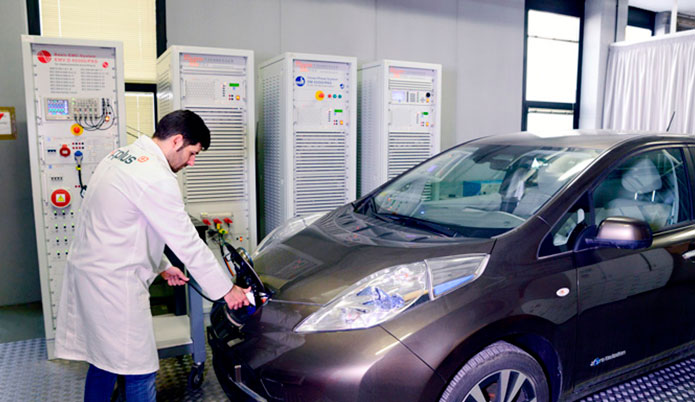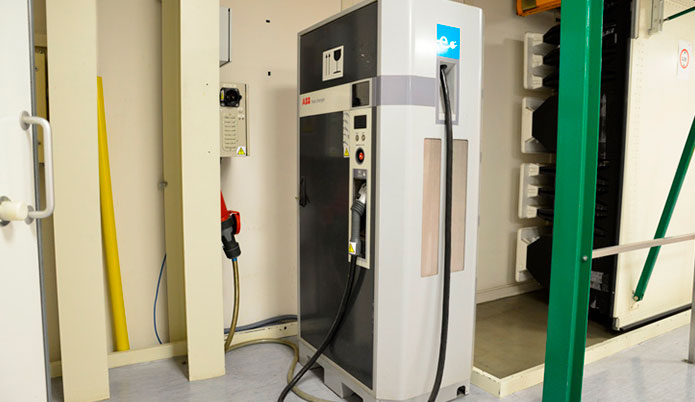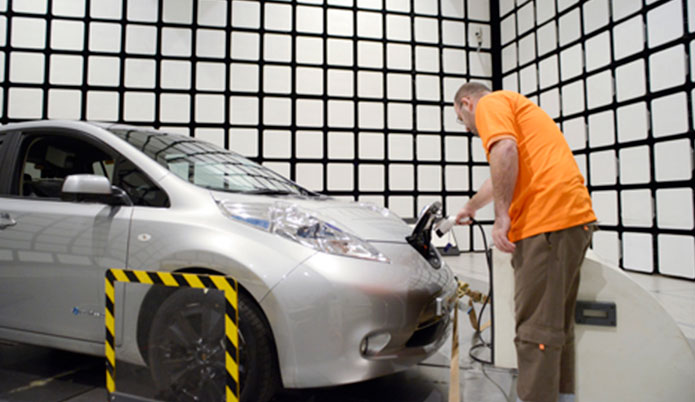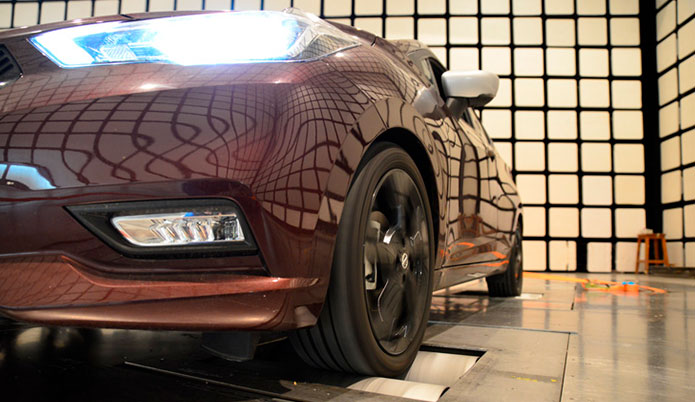EMC Testing on Electrical & Hybrid Vehicles: Technological, Regulatory & Testing Challenges
Mobility legislation at the international level is evolving to incorporate the sustainability commitments that will reduce vehicle fuel emissions, in particular within European regulation and restrictions on fuel-powered vehicles travelling in major cities.
These regulatory changes are accelerating a profound technological transformation in the automotive sector. Manufacturers are being pushed to focus on new innovation paradigms, with hybrid and electric powertrain systems spearheading vehicle development.
The proliferation of electrical systems to power vehicles, together with the tendency to increase the capacity of the chargers to shorten charging times, will be a big challenge in testing and validating electromagnetic compatibility. This challenge applies to all types of vehicles, from motorcycles to off-road and heavy-duty vehicles.
In this article, we analyse the main considerations for manufacturers and laboratories when testing electric vehicles (EV) and plug-in hybrid electric vehicles (PHEV) from the point of view of: charging technologies, testing, and regulation in different markets.
In the next article, we will focus on how these changes will affect the test plans and validation of automotive components.

Testing vehicles under charging mode using different fast-charging technologies
Competition in R&D to increase battery capacity and to reduce charging-time has led to the emergence of various technologies or fast-charging systems (CCS, CHAdeMO, GB/T, TESLA) within the automotive sector. These technologies coexist with other slower charging systems, with a higher degree of standardisation.
Each charging-technology has its own connector model and holds different market shares within different regions in the absence of standardisation. For the charger’s connection point on the vehicle, the trend is for new vehicles to incorporate a universal on-board charger and to provide vehicles with the appropriate connectors, according to region and the client’s requirements.

When planning a test campaign, it is essential to have an expert Technical Service to perform a worst-case assessment based on the different charging technologies. By defining worst-case scenario, laboratories can optimise the validation campaign without compromising the safety of the vehicle.
Equally, each charging technology has their own particularities that affect the test set-up, for instance CHAdeMO and GB/T use CAN networks for vehicle-to-charger communications in Mode 4 while CCS2 uses a PLC signal modulated over the control pilot. Therefore, laboratories may require additional investment to adapt their facilities and add auxiliary equipment to test the vehicles in different charging modes.

Characterising radio emissions
Hybrid and electric vehicles are important sources of electromagnetic broadband emission. These are produced mainly by the inverters feeding the motor and the DC/DC-converters used to power the low-voltage network.
When measuring radio emissions on electric vehicles, a principle difference, compared to measuring emissions on combustion vehicles, is that hybrid and electric vehicles must be tested with the vehicle in motion at a given speed. This is essential to activate all of the associated power electronics for the test scope. In practice, this test is not too problematic because most EMC chambers have a dynamometer (roller bench) to simulate the vehicle’s movement and provide the necessary mechanical loading conditions.

However, older-design dynamometers were initially designed to carry out immunity tests on combustion vehicles, on which these vehicles were tested to check the immunity of the vehicle-electronics on all of the on-board systems. Extending the usage of these old roller banks on radiated emissions tests is problematic, as the dynamometer’s radiation may perturb the measurements. To test electrical vehicles, EMC chambers must have electrically quiet dynamometers, capable of running with emissions below ambient noise, thereby allowing the electrical emissions from the vehicle to be characterised precisely and accurately.
A complex regulatory landscape for electric vehicles
At a global level, we can distinguish between two different types of market-regulation characteristics. Firstly, there are markets where regulation is based upon self-certification, in which it is the manufacturer who is responsible for guaranteeing the safety of their vehicles. Secondly, there are markets based on vehicle homologation, where the manufacturer must comply with tests performed or audited by an authorised Technical Service. The US and Canada are examples of markets based on self-certification, while markets like the EU, China, India and partly Brazil are based on vehicle homologation.
At the regulatory level, there are various approaches to testing electromagnetic compatibility, depending on the different markets. In general, the overall technical requirements of EMC for vehicles are similar. These are based on UNECE Regulation 10, although certain differences can be found, especially on specific requirements to test electric and hybrid vehicles.
- E-Mark (53 countries, including most European countries, Russia, Japan, Korea and Australia). Homologation is required through a Technical Service. The E-Mark is based on a mutual-recognition agreement, signed by 53 countries. EMC requirements are defined in UN ECE Regulation 10, which also describes the specific requirements for electric vehicles (REESS requirements).
- FCC (US): This is a market based on self-certification. In combustion vehicles or non-plug-in hybrids, the electronic components are exempt from compliance with the FCC requirements. This is why the manufacturers are responsible for defining the requirements based on reference standards. However, electric vehicles are included under the scope of the FCC Section 15 subpart B standard, so compliance must be ensured.
- CCC (China): The Chinese certification scheme is similar to CE-Mark or E-Mark. The mandatory requirements in terms of EMC (GB) are equivalent to ECE R10. However, there are recommended requirements (GB/T), such as GB/T 18387 or GB/T 37130, that cover electric/magnetic emissions and human exposure in electric vehicles.
Additionally, the different OEMs have their own specifications to guarantee security on their platforms. These requirements are generally much stricter and with a broader scope.
The future: Increased battery capacity, more charging power, more investment in laboratories
The direction of R&D by manufacturers point to much more powerful charging systems to reduce the time required for charging. These new technologies bring a challenge for EMC facilities and laboratories because these higher voltages and currents require a controlled environment for testing. In addition, the EMC facilities must anticipate the technological changes within the sector to support the development of new vehicles.
Applus + Laboratories is a member of the ISO and CISPR (IEC) committees, and we work actively to develop the future standards. In 2019, Applus+ Laboratories, together with the national committee, hosted the CISPR/D WG1 & WG2 and ISO/TC22/SC32/WG3 2019 meeting.
As an independent laboratory, the mission at Applus+ Laboratories is to support the automobile sector throughout this technological evolution, and offer testing services that support the development of the next generation of electric-powered vehicles. For more information on the electric-vehicle testing capabilities at our EMC laboratories in Spain and the United Kingdom, go to our website to contact the technical team.